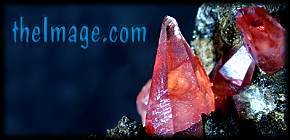
|
|
|||
|
Name: |
arsenopyrite |
|
|||
|
Class: |
Sulfides |
||||
|
Chemistry: |
FeAsS iron arsenic sulfide |
||||
|
Color(s): |
Silverish, whiteish-gray, metallic |
||||
|
Hardness: |
5.5 - 6 |
SpecGrav: |
5.9 - 6.2 |
||
|
Fracture: |
uneven |
Cleavage: |
one distinct |
||
|
Crystal: |
Monoclinic, elongated prismatic crystals with striations, twinning is common |
||||
|
Envronment: |
in sulfide ore deposits, common in medium to high temperature hydrothermal veins. Frequently in metamorphic deposits. |
||||
|
Association: |
often found with gold, silver, and nickel minerals |
||||
|
Locals: |
| Bolivia | Mexico | Canada | Hungary | Colorado, Conn., USA | England | Norway | |
||||
|
Misc: |
The most common mineral containing Arsenic, it is soluble in Nitric Acid, yielding Sulfur. If it is struck with a metal object it produces a garlic odor. Its name is a contraction of an archaic term "arsenical pyrites". |
||||
|
Photos |
|||||
|
1.) Yao Guang Xiang Mine, Cheng Zhu City
S. Hunan China |
4.) Zacatecas, Mexico |
||||
|
|
|
|
|
|
|
|
|
|